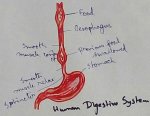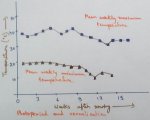Drug Use in Sports
Indian cricketer Prithwi Shaw has recently been banned from playing Cricket at the competition level for 8 months following an inadvertent brush with cough syrup laced with drugs. The history of drug use in sports is as old as the history of competitive sports. Many sports person resort to the use of performance enhancing drugs to give them a competitive edge over rivals in Sports. This is known as ‘Doping’.
As of now there are five severe cases of ‘doping which comes under major scrutiny and all of them carry several side effects.
1. Stimulants: They help the athletes to stay more alert and keep fatigue at bay. However, on the flip side they may cause cardiac arrest and are addictive in nature.
2. Anabolic Agents: They help to increase the strength of muscles and train harder and longer However, the flip side is the kidneys are severely affected and the athlete is prone to aggression and ragging hormone.
3. Diuretics: This helps to drain the fluid from the body and build up body mass and weight as required by wrestlers and boxers and body builders. They may however cause intense dehydration.
4. Narcotic Analgesics: They help to mask pain syndrome or fatigue which can aggravate the seriousness of injury. They are extremely addictive in nature.
5. Peptides and Hormones EP (Erythropoietin) Red Blood Cells – They provide more energy and HGH (Human Growth Hormone) which helps to build more mass. However, the risk of heart attacks and abnormal heart diseases is one of its major side effect.
All these drugs are banned the world over by the Medical Council and leading Sports Authorities and athletes who do come under the scanner have to face intense disrepute and official bans.
Apart from these, Beta Blockers is banned in the game of archery and shooting as they are known to stabilize motor functions and keep trembling and shaking, at bay.
Blood Doping which may lead to renal or cardiac failure is also banned in competitive Sports.
Drugs not only effect feelings, moods, behavior, decision making ability, retention power, and learning but also has serious impact on physical health leading to motor malfunctioning, cancer, heart diseases, lung and renal disorders, liver malfunctioning and mental ailments. Even highly infectious and life threatening diseases as HIV, Hepatitis or tuberculosis may result on account of not only regular or persistent use of drugs but also single / first time use.
A sound mental health is an attitude to lead a positive way of life battling all odds but the desire to take drugs starts with a craving, usually to alleviate some stress or pain but soon becomes a crutch which is difficult to dislodge. Drugs interfere with the chemicals in the brain sending unnatural triggers for release of certain hormones which generate a false feeling of euphoria or deliriousness but eventually leave its victim totally deflated when its effect wears off. The long term effect on brain is even more far reaching with drugs meddling with the strength and vulnerabilities of its victim leading to reduced inhibition, anxiety disorders, a fear of things spiralling out of control, fading out of one’s identity, false delusions, Bipolar Disorders and Attention Deficit Hyperactive Disorders leaving a person ecstatic at one point and dejected the very next.
English Grammar and Composition
From Drug Use in Sports to HOME PAGE
Recent Articles
-
Eleventh Grade | Eleventh Grade Science | Eleventh Grade Math
Jun 27, 25 12:26 AM
Eleventh grade biology has been designed in accordance with the recommended topics. We will cover all the topics in biology very exciting and interesting way. -
Explain Digestion of Food | Salivary Glands | Oesophagus | Stomach
Jun 27, 25 12:20 AM
Before the digestion is start by the different enzymes secreted from the different digestive glands food must be turned and chut or mixed with saliva inside the mouth. -
Explain Human Digestive System | Mouth | Tongue | Pharynx | Teeth
Jun 21, 25 01:15 PM
Digestive system is a system of alimentary canal and digestive glands. Alimentary canal- alimentary canal is a tube of variable diameter having muscular wall and glandular epithelial tissues which sta… -
Vernalisation in Plants | Definition | Mechanism | Devernalization |
Jun 18, 25 01:34 PM
Definition of vernalisation- The change of flowering habit due to the low temperature treatment is known as vernalisation. This is a physiological process which was denoted by Clipart in 1857 invite b… -
The Food We Eat | Food we Get from Plants and Animals | Carbohydrates
Jun 15, 25 03:20 PM
What are the food that we should eat? Find out the names of ten food items in the word maze. Write the names in the correct column of the table given below. Food we get from plants Food we get from an…




New! Comments
Have your say about what you just read! Leave me a comment in the box below.